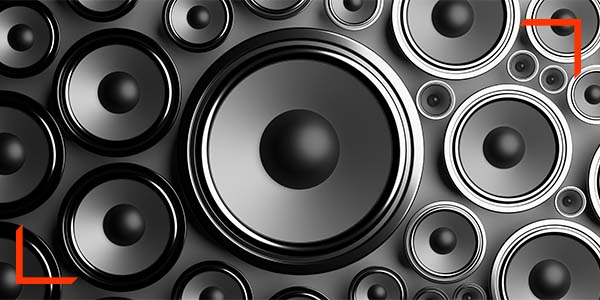The great power illusion
For many of us, we are already aware of the great power compression robbery that plagues loudspeaker system specifications. If we believe the manufacturers claims of loudspeaker output figures and specify a system based on those figures, we will most often find ourselves looking at a best case of a 10dB discrepancy against us when we finally go and measure the system once installed. Lesser experienced people often finding themselves puzzled at the discrepancy and put it down to their measurement error.
I have covered this topic in depth in previous articles. (1)
If we believe the manufacturers claims of loudspeaker output figures and specify a system based on those figures, we will most often find ourselves looking at a best case of a 10dB discrepancy against us when we finally go and measure the system once installed
A short prelude
A reminder of the First Law of Thermodynamics.
I think one of the first rules of physics many of us learn at school is the “First Law of Thermodynamics” (2), relating to the conservation of energy in that “Energy can neither be created nor destroyed, only converted to other forms”, and we need to remember this. This fact is important, but it is something that loudspeaker manufacturers routinely ignore.
So, what is this great power illusion you speak of?
Well, it is largely a failure of an organisation that should know better (mainly, among others, the AES in their specifications of how loudspeakers are measured).
According to the Standard AES2 2012. Section 6.2 (3) the following process shall be used.
The device under test shall be subjected to successively higher powers and allowed to reach thermal equilibrium at each increment (approximately 2 h). Power shall be determined as the square of applied rms voltage, as measured with a true rms voltmeter, divided by the rated impedance. The rated power of the device shall be that power the device can withstand for 2 h without significant permanent change in acoustical, mechanical, or electrical characteristics.
The major flaw in this process is that with an increase in the power applied, the voice coil will exhibit a significant increase in temperature and resistance, so therefore, the “rated impedance” will have no bearing upon the actual load the loudspeaker is presenting to the amplifier, and thus current drawn at the time of testing.
It is not uncommon (4) for a heavily driven 8ohm loudspeaker using modern adhesives to reach in excess of 6dB of power compression caused by the voice coil temperature rise, and have a possible voice coil resistance now of 32 ohms rather than nominally 8 ohms. There are well published figures of the increase in resistance per degree of both copper and aluminium conductors, and more so with coils and inductors under load, this is the basis of an electric heater or induction heater.
As the AES power handling capacities do NOT measure the actual consumed power of the loudspeaker, they simply measure voltage at the input terminals, they absolutely DO NOT actually tell us the power handling capacity of a loudspeaker or how much power it is consuming at the time of measurement.
They simply tell us the value of the RMS voltage the loudspeaker under test can take at the point of destruction. This is absolutely, only half a measurement that would determine the actual watts, the other half, the current consumed, is wilfully neglected, and knowingly assumed to be a non-existent best-case scenario.
All the test measures is VOLTS, the only actual number from the test is VOLTS, this number is then added to a calculation and a mathematical function based on a wrongly assumed value is carried out. The only truthful figure is the Volts applied at the point of destruction of the loudspeaker.
As the AES power handling capacities do NOT measure the actual consumed power of the loudspeaker, they simply measure voltage at the input terminals, they absolutely DO NOT actually tell us the power handling capacity of a loudspeaker or how much power it is consuming at the time of measurement.
If we take a nominal 8ohm high-end low frequency loudspeaker that has a rather unrealistic, but common, power handling capacity of, let’s say, a rather hilarious 2000W AES (Yes there are some) and look at how that is actually performing, we will find evidence that 2000W is a blatantly fictitious number.
In most cases, it has been measured (4) that by the time our half-a-picture voltage “power” figure is reading about 2000 watts, the loudspeaker is actually exhibiting around 6dB of power compression. As power compression is mainly a function of voice-coil heating, this 6dB figure would suggest that we are only consuming 500W of energy from our amplifier (each 3dB being a doubling of power), and the voice coil would generally be presenting somewhere in the region of a 32 ohm load to the amplifier, rather than our “assumed” 8 ohms.
In this case, the manufacturers quoted “2000 W” never existed, and doesn’t exist. The driver itself managed to current-limit itself to about 500W and just sits there as the voltage and coil temperature rise until the point of failure.
It was once written in the excellent Electro-voice PA Bible (5) “One day some sharp salesman will sell you a lightbulb” It seems that day has come, as a conventional tungsten filament lamp does the exact same form of current limiting by raising the temperature of the filament as current flows and therefore its resistance to current flow increases until no more current can flow.
At best a normal household filament lamp may have 0.5 ohms when cold and if we took that as its nominal resistance then the power rating of our normal “60-Watt bulb” calculated by ohm’s law on a 230V supply would be 105,000W which it clearly isn’t (except for a mere nanosecond on start-up (hence pre-heat on show dimmers)). In reality with Ohm’s law, we can calculate that it actually has a filament resistance of about 1100 ohms when hot, if it consumes 60W.
It makes no sense at all that a woofer with a passively cooled 4-inch coil could ever take 2000W of power, because the thermal calculations just don’t add up. If we credit a woofer in a best-case situation (probably too good) of having an acoustic efficiency of 20%, i.e., only radiating 20% of the input power as sound, then at even 500W we would need to dissipate 400W of heat through the air gap, the magnet, and the loudspeaker chassis, then onwards to the air inside of a cabinet. And even that is a tall order, even a 400W heater can get relatively warm in an enclosed space.
At the hilariously stated 2000W, this would be absolutely ridiculous. Just imagine a 1600W to 1800W electric heater connected to a paper cone, surrounded by warm cabinet insulation, burning away in the loudspeaker system. We would very soon have a fire, and the magnet structure (if it was neodymium) would be so hot it would permanently lose all its magnetism. However, that wouldn’t be an issue as our loudspeaker would have burned to a crisp anyway. From an engineering point of view, it is absurd that any low-efficiency loudspeaker (like a woofer) which is passively cooled, inside a box, should be able to absorb kilowatts of energy, and somehow not radiate it, this defies the laws of physics.
From an engineering point of view this is absurd. The only way a loudspeaker could be thermally safe at those power levels would be if it was 80 or 90% efficient in turning energy into sound (which it is not).
Fortunately, the laws rule, so a 2000W loudspeaker is not a 2000-watt loudspeaker at all. In fact, we’d be very lucky if it is a 500W loudspeaker, (judging by the amount of heat generated within a cabinet and dissipated over a long period), and in most cases, we would be lucky if we had just a little over a few hundred watts of heat. Even in a vented cabinet, we get very little “airflow” in the ports until the very lowest of frequencies.
Normally, we simply have a piston motion that changes very little air inside the box, so we are not actually pumping heat out of the cabinets. Even so, were this to be the explanation of why we don’t have an inferno, even if we had two 2000W woofers in a cabinet, we would have to blow out at least 3200W of heat from the port if the manufacturers figures were to be believed. That would mean if we put our hands right in front of the port we would get burned, which is something that has never even come close to happening. Think how hot the air from a 2,000W heat gun is, you can melt solder with it.
So where is all this leading?
For a sound system designer, things have become far more problematic in recent years. Historically, with early amplifiers like valve amplifiers, early class A amplifiers, and even class AB amplifiers, we had relatively inefficient electronics, sometimes as low as 50%, so an amplifier of just a few hundred watts would therefore dissipate as much energy in heat itself as it would deliver to the loudspeaker. With a low-efficiency loudspeaker like a simple direct radiator, the temperature of the heat sinks on passively cooled amplifiers (such as a Crown DC300A) would often be similar to that of the coil and magnet of the 5% (or less) efficiency loudspeaker (I have actually made toast (very slowly) on a heavily driven passively cooled 500W class AB MOSFET amplifier – they can get quite hot, too hot to touch).
In this circumstance, with relatively low-power loudspeakers (about 200W rms) and inefficient amplifiers, we could more or less calculate the system power-consumption and current-loads with reasonable margins of accuracy. Even taking power compression into account on these older systems, with the inefficiency of the amplifiers we would have a reasonable correlation between power consumed and rated power of the system if we applied a small correction factor. That is to say, a 1000W sound system would actually consume somewhere about 1000W if taking into account about 1 or 2dB of power compression from the lower-powered loudspeakers and leaving maybe 3dB of “headroom” on a heavily driven bass loudspeaker.
For a sound system designer, things have become far more problematic in recent years. Historically, with early amplifiers like valve amplifiers, early class A amplifiers, and even class AB amplifiers, we had relatively inefficient electronics, sometimes as low as 50%, so an amplifier of just a few hundred watts would therefore dissipate as much energy in heat itself as it would deliver to the loudspeaker.
By contrast, as adhesive technologies, coil former materials, and amplifier efficiencies have improved, we now have a very different situation. Where a voice coil would begin to de-laminate at somewhere about 150° C due to adhesive failure, or voice coil formers would begin to blister, we now see coils running at temperatures that can melt solder (which is why some coils are now crimped to the lead-out wires, not soldered) Along with stronger suspensions and thermally improved magnet structuress, we have seen loudspeaker so-called “watts” increase massively. At the same time, class D amplifiers have risen to 95% efficiency, so we now see a very big difference between the rated power of a loudspeaker system and the actual power consumed by the amplifier. We have 2000W amplifiers running at full-voltage rail swings, yet only delivering 500W, and only consuming 550W from the power source. At the same time, they are driving our supposed 2000W sound system at full power, which almost seems like it’s too good to be true, because a 2000W system that only drew 500W would imply free energy! Well as with all “Free Energy” devices, it’s a con, because the 2000 watts never existed in the first place. I’ve seen 20,000W sound systems running at “full power” on 10,000w generators with no issues.
As an electro-technical engineer who works on large-scale systems, I find that this is a huge problem. If I have a 100,000W (claimed power) sound system with a (true) 100,000 watts of amplifiers, I could be tempted to ensure that I have 100,000W of power available for that system. Indeed, it wouldn’t be a problem for the system if I had, and for sure, having over-size cables on an electrical system is a very good thing for audio systems. Even so, the problem arises when on large-scale systems we have to specify the size of the building power supply, and often pay to increase the local transformer size. If in the end we only need 20,000 watts, that would be a very big waste of capacity. In a land of 230V electricity, if the sales figures were believed, it means a supposed 430A supply at just under 150A per phase, but if we look at the true figures, an 85A supply, at just under 32A per phase, would have been adequate. In some cases, this will mean we are requesting an upgraded power supply to a building where the existing supply would have been fine.
Furthermore, if we are working on a live event, this would be a serious over-spend on generators. It’s worth noting that reputable amplifier manufacturers often test their amps on cooled resistive loads and actually do state believable power consumption figures for the specified load. We assume that when we specify a system that we have the 8 or 4 ohm nominal load and we think we have it at the maximum voltage. If we did, then the amplifier power consumption figures would be true, however with these absurd power single drivers we see that there is a big difference.
Until such time as the wattage of loudspeakers is actually measured, and not calculated form some knowingly false idealised properties that vastly change with input, we need to be very careful with how we calculate our loads. In cases where we see a manufacturer present a power compression figure (which they may be inclined to “improve beyond reality” to favour their sales) we can at least halve the actual consumed power per each 3dB of specified power compression. When a loudspeaker appears to have an absurdly high power-handling capacity, it is best to be highly suspicious of the figures.
It all comes back to the First Law of Thermodynamics and the conservation of energy. “Energy can neither be created nor destroyed”. So, when a loudspeaker has a 10% efficiency and a 2000W power-handling capacity, can it really dissipate 1800W of heat from its chassis inside a cabinet without causing catastrophic damage? The chances are that it’s not even close to drawing that power from an amplifier when the input voltage at its assumed cold resistance would suggest it is.
Any engineer can easily understand this, and unless a loudspeaker is vastly more efficient or has some form of serious forced-cooling system (there were some), then it is obvious that unless the unit as a whole gets red-hot, it is not consuming anything close to 2000W of energy.
The fault here lies with people such as the AES and others who wrote the methods of power testing (presumably to make it easy to do with a pocket multimeter) that rely on measuring one parameter and wilfully ignoring the fact that the other assumed (cold) value can change up to as much as 200% during the test. (Assuming 6dB of power compression). Simply measuring voltage across the coil and current delivered by the source would have easily solved this issue and allowed for the calculation of a truthful result. The lower-than-expected current would correct the wattage figure to what is actually being consumed. We can suppose in some ways that maybe at the time of writing the standard that adhesive and material technologies of the then lower powered loudspeakers and the lower running temperatures of voice coils meant it wasn’t such an issue as it is today. However, it was still a well-known fact even in the late 1980’s before the standards were written.
The message here is simply, do not believe any single loudspeaker driver figures which claims to have AES (or similar) power handling capacities in the Kilowatt or above region, it is usually a measurement error. It may be able to take voltages in that region, but it’s resistance will be so high as to limit the current it consumes, and in reality it will actually only take a few hundred watts. Take great care when specifying electrical power systems for such sound systems.
Any loudspeaker which is exhibiting up to 6dB of power compression at full power will only be consuming a quarter of the power that the voltage measurement would suggest.
Commentary.
“Marketing” is an easy target for the engineer to dismiss, yet without marketing we would have very few sales. However, unchecked, the marketing folks can get away from reality on a “Me too” race. A well-known industry engineer from a large global loudspeaker manufacturer once said to me on a public forum, words to the effect, “Yes, I know we are lying, but so is everyone else and at least our numbers are relative to theirs even though none are true. A customer can at least make a comparison where we are not at a disadvantage so long as all our methods are similar”.
As a member of many industry standards committees, I know very well how salespeople from large industry manufacturers join the standards bodies only to defend their own position. It can often be a minefield trying to develop a credible standard, often akin to herding cats trying to get a working consensus that doesn’t advantage any committee member over another. Sometimes standards don’t even set out what they intended to do as a result of committee interests.
It is easy to be critical of the AES and AES-02-2012, but we have to understand that it was much better than what preceded it and the vast number of different power tests that we had to decipher in the 80’s. Until loudspeakers started to get to the (claimed) Kilo Watt range the discrepancy was often minor, and the method stood up better than any other at the time.
What is sad is that as an engineering led industry we have fallen into the realms of Hi-Fi mythology where the average customer is misled into believing they have bought something that will do something that it won’t. Many a junior engineer and even some senior ones fall foul of these distorted specifications. When engineering high powered systems, it takes a lot of correction factors to get a correctly specified system. Power compression is probably the greatest culprit, even though it is widely understood. Most systems won’t even come within 10dB of their on-paper claims, and with higher powered systems where drivers are claimed to have absurdly high power handling capacities, often the actual consumed power is as little as a quarter of the claimed figure.
From a systems engineering perspective we find ourselves in a situation where if we follow the specification sheets, we will demand nonsense electrical systems and end up with half the volume we need. More so, in the environmentally conscious age of today we could even find ourselves at a significant detriment in calculated power figures for a project compared to what a system may actually consume.
The message to fellow systems engineers is, until something changes, to seriously be sceptical of manufacturer’s figures. It takes a lot more skill than most people think to design an efficient optimised system. Be very sceptical when anyone tells you they have a 10% efficient loudspeaker that can consume thousands of watts and not get very hot indeed. Something doesn’t follow the laws of physics there.
References
- Loudspeakers and Not-so-loudspeakers. J Newell 2017 – http://www.newellacousticengineering.com/assets/power-compression-j-newell-2017(pn).pdf
- First Law of Thermodynamics – https://en.wikipedia.org/wiki/First_law_of_thermodynamics
- AES-02-2012 – https://parkaudio.ua/DOCz/knowledgebase/aes02-2012-f.pdf
- Beyma 118NdW specification sheet – https://www.beyma.com/speakers/Fichas_Tecnicas/118NdW.pdf
- The Electro-Voice PA Bible – http://www.datalinkplus.com/procomm/BASICTR/PABBLWEB/02PowerHandlingCapacity.pdf




